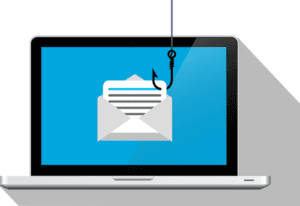As technology advances, so do the tactics of cybercriminals. Two newer threats on the horizon are vishing and quishing, which pose significant risks to businesses. Knowing what these threats are and how to protect against them is essential for maintaining the security of sensitive information.
Vishing: The New Face of Voice-Based Phishing
Vishing, or voice phishing, is a form of phishing that uses phone calls instead of emails to deceive individuals. Hackers use sophisticated voice technology to impersonate credible entities such as government officials, bank representatives, or other trusted sources. They may either directly call the victim or leave a number for the victim to call back.
During a vishing attack, the scammer manipulates the victim into providing personal information. This can include asking victims to install malicious software, click on harmful links, or visit fake websites designed to steal data.
Impact of Vishing on Businesses
Businesses are particularly vulnerable to vishing attacks. If an attacker convincingly pretends to be part of your organization, they can extract sensitive information from your customers or employees. This can result in data breaches that damage your company’s reputation and erode customer trust.
Financial losses are another serious consequence. For instance, if a scammer poses as a bank representative, they could trick your customers into revealing their bank account details or social security numbers. This makes your business appear unreliable and complicit in the scam, further damaging your reputation.
Quishing: QR Code Phishing Tactics
Quishing, or QR code phishing, is another method cybercriminals use to trick victims. Instead of using links or voice prompts, quishing employs QR codes that direct users to fake login pages or malicious websites when scanned.
Victims are often tricked into scanning these QR codes through convincing emails or messages that appear to come from trusted brands or businesses. Once the victim enters their credentials on the fake webpage, the cybercriminals gain unauthorized access to their accounts and sensitive information.
Quishing’s Business Risks
Quishing can be particularly damaging for businesses, especially in the retail sector. Cybercriminals may send emails that look like they are from your company, announcing fake promotions or urgent notices. Customers, believing these emails are genuine, may scan the QR codes and unknowingly compromise their information.
Such incidents can lead to a loss of customer trust. Moreover, if the malicious QR codes lead to malware or ransomware attacks, your business’s data and daily operations could be severely affected, resulting in financial and operational setbacks.
Strategies to Safeguard Your Business
One of the most effective ways to protect against vishing and quishing is through thorough employee training. Educate your team on how to recognize and respond to these threats. Key points to cover include:
- Avoid clicking on links or scanning QR codes from unknown sources.
- Verify the authenticity of any urgent or suspicious requests with a manager or other authority.
- Use secure web browsers and software.
Regular security awareness training can help your employees recognize and mitigate cyber threats, reducing the risk of falling victim to vishing and quishing attacks.
Implementing Defensive Tools
Investing in strong cybersecurity tools is crucial for defending against these emerging threats. Implement multi-factor authentication (MFA) to add an extra layer of security. Utilize email security solutions that can detect and block malicious QR codes and phishing attempts.
Combining employee training with advanced defensive tools can create a robust barrier against cyber threats, ensuring the safety of both your data and your customers’ trust.
In conclusion, as vishing and quishing continue to evolve, staying vigilant and proactive is essential. By understanding these threats and taking appropriate measures, you can protect your business from the growing menace of cybercrime.





